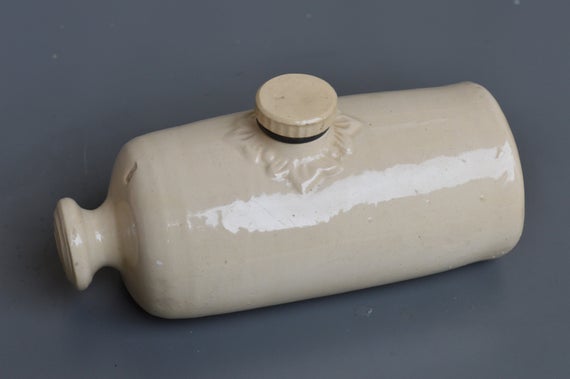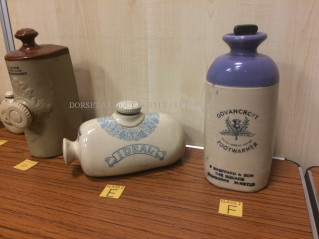Hot water bottles have been keeping us warm for centuries – in many shapes and sizes
The origin of the humble and helpful hot water bottle is debated, with various cultures using similar methods to stay warm. Some stuck as traditions, others faded away and new names and ways of retaining heat came along as more efficient replacements.
One original use was as an alternative to coal warmers. During colder nights, and especially during winter, people placed these hot water bottles under covers to help keep themselves warm.
Unlike coal warmers, hot water bottles can stay under covers with the sleeper, warming them up for longer periods. Also, they’re much safer than using coal near the bed fabrics, which obviously posed a fire risk.
Stoneware hot water bottles
In an era long before plastic or rubber extra long hot water bottles entered the market, there were various materials put to use as winter warmers. During our research we came across stoneware hot water bottles.
Anything with the word ‘stone’ in the title usually indicates that some of these items could become particular heavy. Indeed, stoneware clay was fired to a high temperature which made it thicker and more hard-wearing.
Polished to look like stone, these bottles became heavy and awkward once filled with water. Water boiled on a stove or in a hearth was then poured in through the neck (located at the top) and there was a handle at the side. The best part is, these amazing bottles are still for sale today! As antiques of course.

These stoneware hot water bottles were shaped so that as much of the bed as possible could be warmed. The idea was to stand them upright in bed, on their small flat end so that the sheets and blankets formed a tent-like structure over them. The peak of the ‘tent’ was the special feature of the rounded knob opposite the flat end, which also served as a carrying handle.
Getting warm in bed
with stoneware hot water bottles
A hot water bottle or a ‘jar’?
Apparently there are 33 different names for a hot water bottle. Seems a bit much, but as long its doing its job and keeping you warm it doesn’t matter what it’s called.
In Ireland hot water bottles are often referred to as ‘jars’. This stems from glass bottles or jars being filled with hot water and left to warm up the bed in years gone by.
Modern uses of hot water bottles
Hot water bottles nowadays are still used as bed warmers, but they’re more commonly used by campers who may not have any other source of warmth in the middle of the wilderness.
Campers often place these hot water bottles inside their sleeping bags to help them sleep more comfortably even when it’s freezing outside their tents. Inside homes, hot water bottles are still popular alongside electric blankets and furry socks.
Fortunately, people soon figured that there are a long list of uses for the hot water bottles aside from their original purpose: heat therapy for pain relief, easing pregnancy pains and much more.
Collecting Hot Water Bottles
From stamps to model trains, there are collectors worldwide of all weird and wonderful artefacts. Hot water bottles are no different. Newbury’s Chris Brownell has been digging up bottles and jars for decades. Boasting over 500 bottles in his collection, beer bottles to medicine jars, one of Mr Brownell’s prize possessions is a ceramic hot water bottle from Davies’ China shop.

At the Dorset Antique Bottle Club some vintage warmers are shown in the photograph above. These are similar in design and materials to the original Stoneware bottles we saw earlier. Nowadays you can wrap an extra long hot water bottle snugly around your feet but the Govancroft Footwarmer also looks appealing, if a little cumbersome.
The item above is Stoneware pottery. Govancroft originated in the 1900s in the East End of Glasgow. W Sheppard and Son was based in Wimborne Minster (Dorset).
Do you have any hot water bottle stories or different names for them? Let us know in the comments below.

